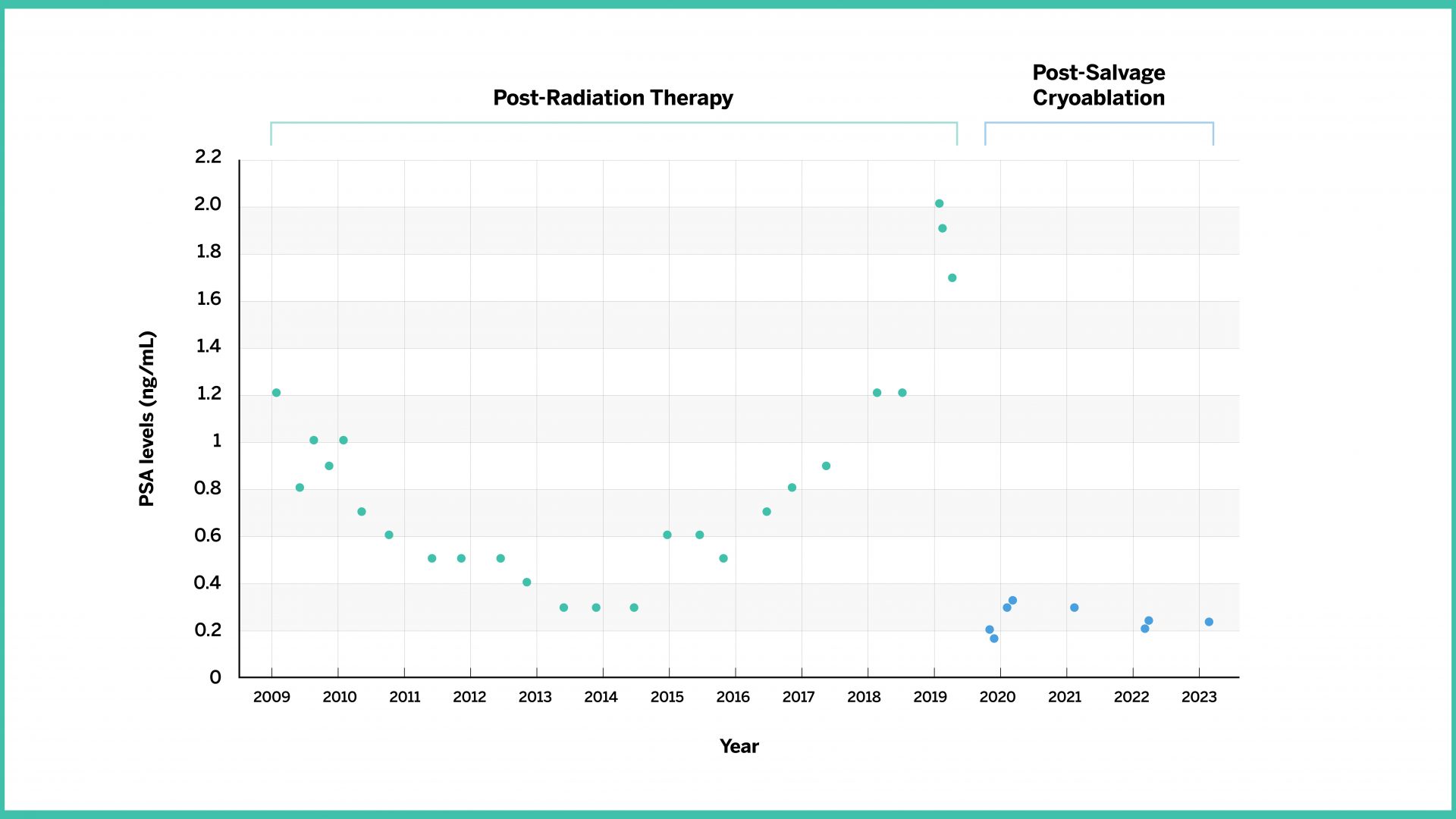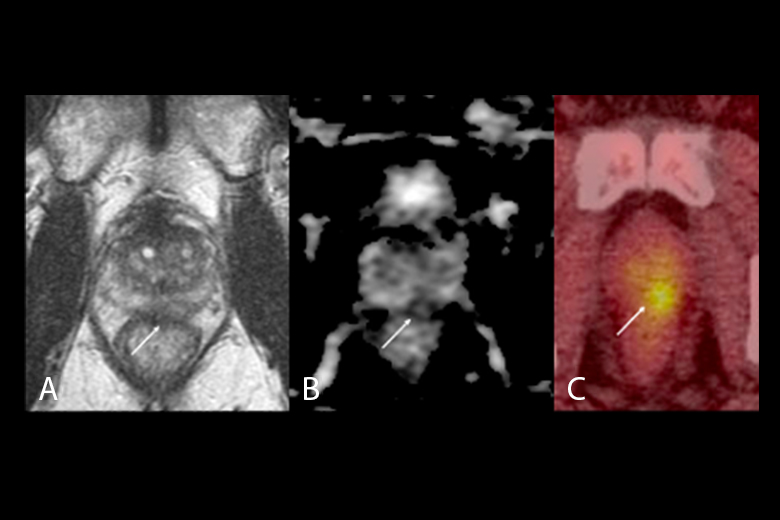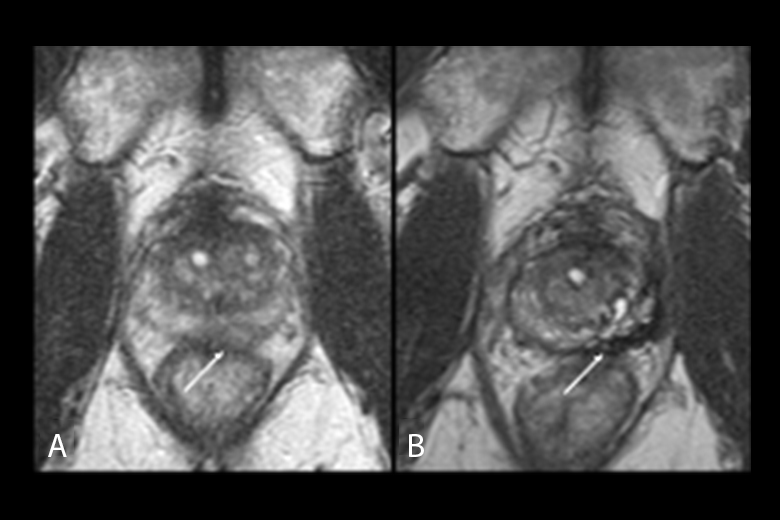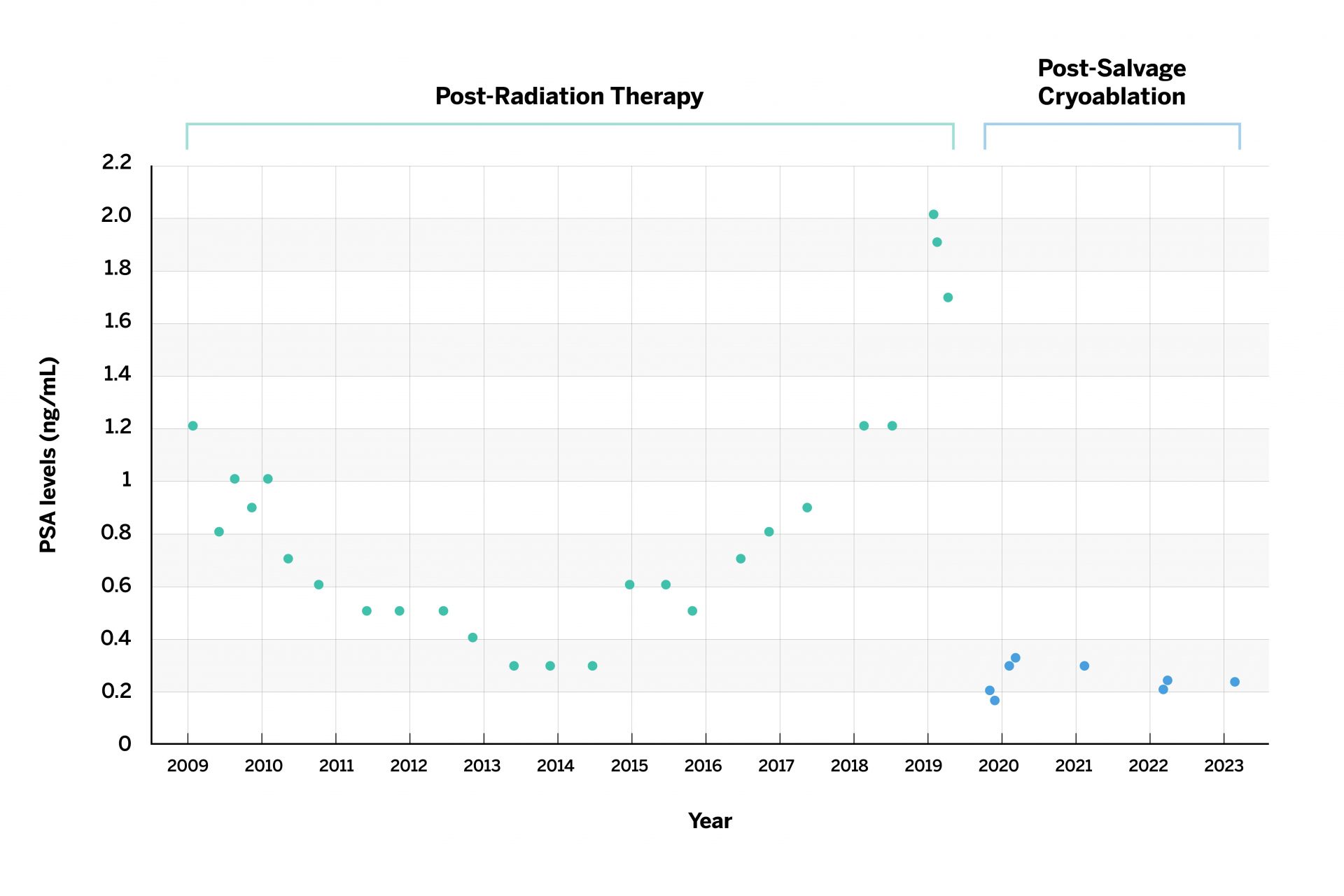Advanced Imaging Enables Successful Salvage Partial Gland Cryoablation
A man in his late 60s presented to Perlmutter Cancer Center at NYU Langone Health with radio-recurrent prostate cancer.
In June 2008, doctors had diagnosed the patient with Gleason 4+4 prostate cancer and treated him five months later with intensity-modulated radiation therapy. Post-treatment prostate-specific antigen (PSA) monitoring in May 2013 showed a nadir of 0.3 ng/mL. By March 2019, however, his PSA had risen to 2.0 ng/mL with a doubling time of 8.2 months, raising concerns of disease recurrence.
At NYU Langone, multiparametric MRI (mpMRI) and 18F-fluciclovine PET helped localize the lesion and rule out metastatic disease.
After a discussion of treatment options, the patient selected a targeted salvage cryoablation procedure. A pretreatment transperineal prostate biopsy helped further characterize the extent of disease and demonstrated Gleason 4+5, Gleason grade 5, in the left lateral posterior, left posterior, and left medial posterior zones.
“The management of radio-recurrent prostate cancer presents unique challenges and requires a tailored approach,” says urologic oncologist James S. Wysock, MD.
“Our use of MRI and targeted biopsy enabled precise localization of the disease recurrence. Localizing the cancer in this manner allowed the treatment to be directed to this region instead of the entire gland, minimizing side effects and procedure risk.”
“The case is notable for the fact that there have been no complications on the order of a salvage prostatectomy, such as incontinence or rectal fistula, and the treatment has resulted in excellent short term cancer control.”
James S. Wysock, MD
In an ambulatory surgical suite, Dr. Wysock performed cryoablation via Endocare V-Probe cryoprobes advanced percutaneously into the prostate transperineally under ultrasound guidance.
Post-ablation surveillance biopsies at six months and two years found no evidence of cancer in the ablation zone or remainder of the prostate; PSA and MRI monitoring have likewise shown no cancer over a four-year follow-up.
The patient remains continent and intracorporeal injection therapy to treat his erectile dysfunction has yielded an adequate response.
“The case is notable for the fact that there have been no complications on the order of a salvage prostatectomy, such as incontinence or rectal fistula, and the treatment has resulted in excellent short term cancer control,” Dr. Wysock says.









